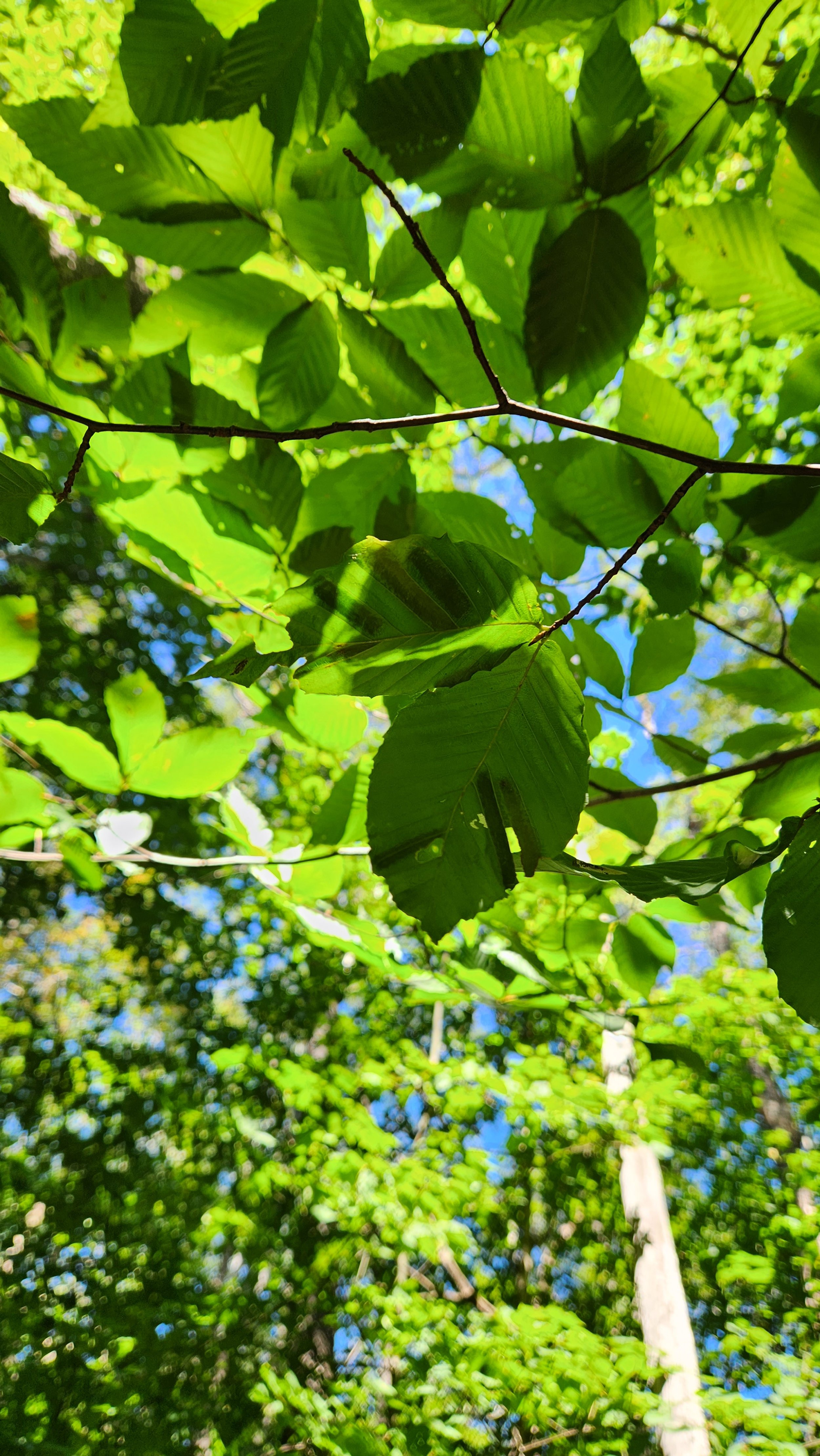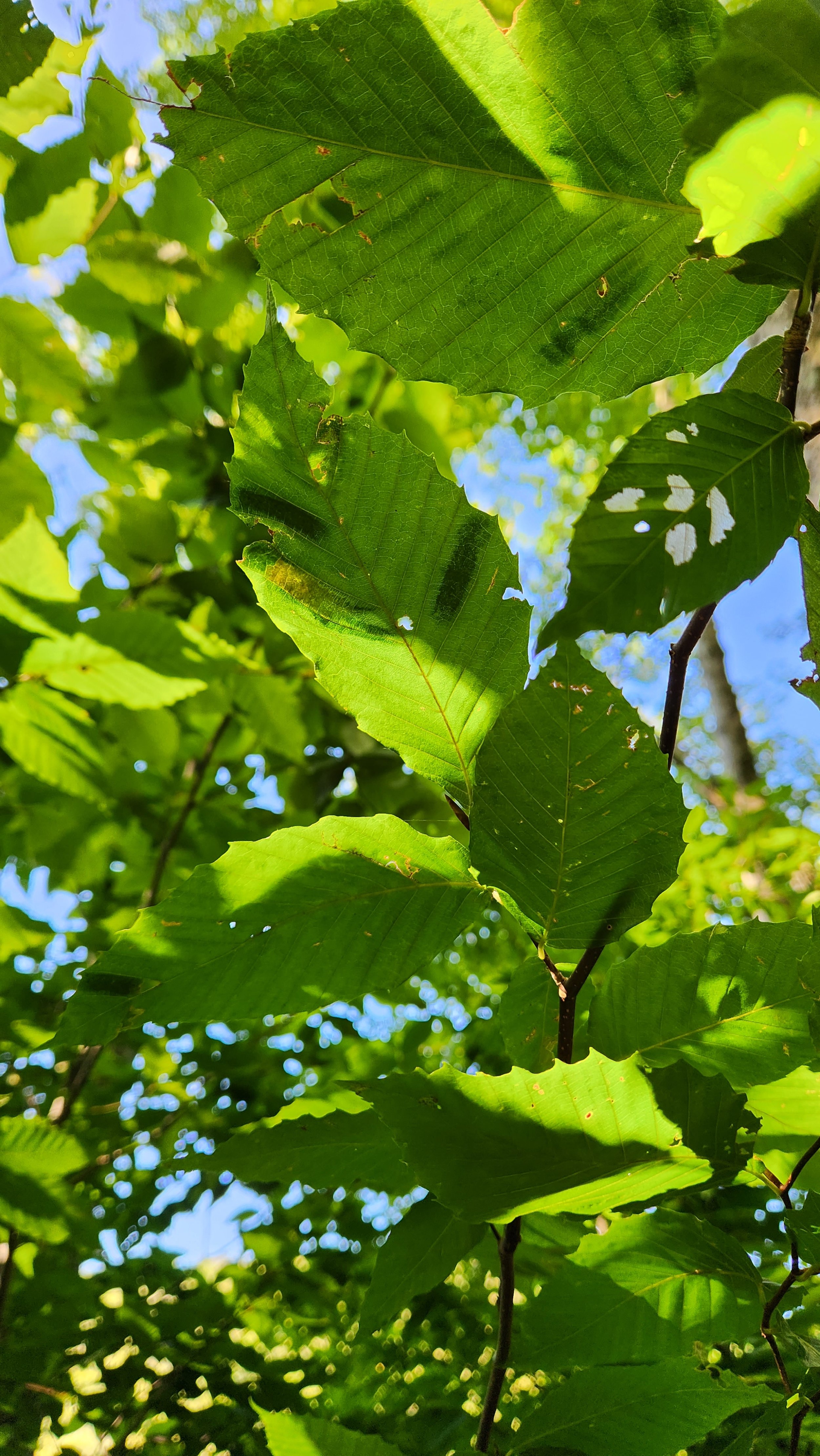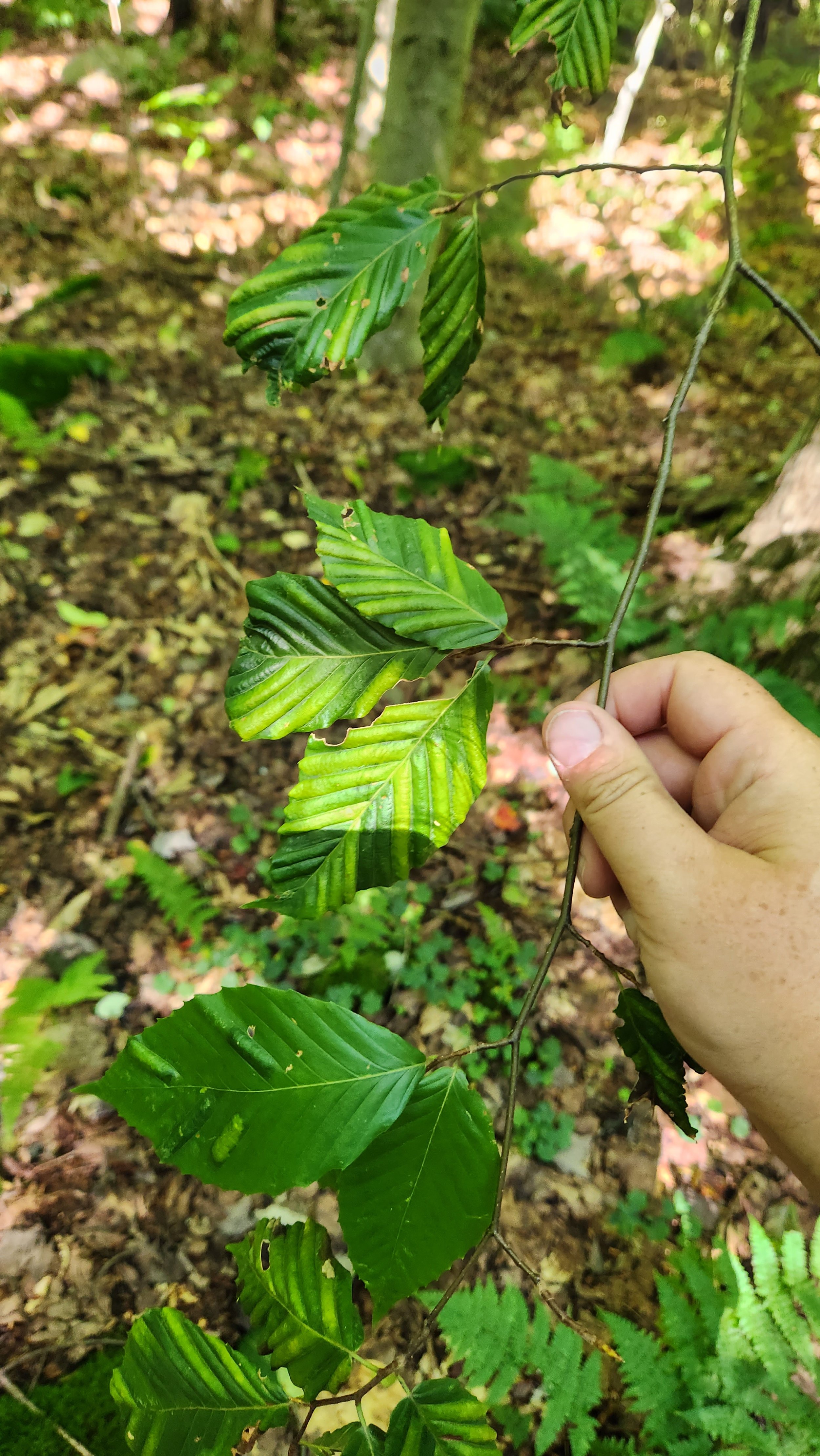Beech Leaf Disease



Key Identification Features
Early Stage Symptoms
Dark bands between veins in ‘healthy’ leaves
Dark bands may feel rough and bumpy
Most apparent when viewed from below
Late Stage Symptoms
Leaves are withered and malformed with a bumpy, leathery texture
Discolored with splotches of dark green and yellow
Reduced bud and leaf production
Description
Studies are currently being done to understand Beech Leaf Disease (BLD) and its exact mechanism of spread is not known though it’s likely to be tied to a non-native nematode, Litylenchus crenatae mccannii. Infected trees show symptoms from summer to winter and striping can be observed as soon as the 1st leaf out of the season. Disease progression varies based on tree size with large trees showing symptoms in lower branches initially and moving upwards as the disease progresses. In saplings, the disease progression is quick and can result in mortality within a year. The symptoms can vary by tree with some branches appearing unaffected and others heavily symptomatic and leaves on the same branch displaying various stages of infection.
When viewed from below on a sunny day striping between leaf veins is apparent, appearing shadow-like with dark stripes. Upon closer inspection, the dark stripes are bumpy and leathery in texture. As the disease progresses the leaves become shriveled and deformed near the branch tips. The leaf color becomes splotchy with dark greens and yellows. Leaf and bud production slows and premature leaf drop may occur.
Native Range
BLD was first detected in Ohio in 2012 along Lake Erie and has since spread into MI, PA, NJ, ME, CT, MA, NH, VA, NY, and Ontario. It seems likely that it originated from Asia after studying a related nematode, Litlylenchus crenatae, observed in Japanese beech trees (F.crenata). It was detected in the CRISP PRISM in 2022.
Habitat and Dispersion
Further research is still needed to determine the exact mechanism of spread but research seems to indicate it can be closely tied with a nematode, Litylenchus crenatae mccannii. BLD spreads rapidly and results in high mortality rates in younger trees. Progression of the disease can vary and may depend on the age of the tree, with saplings showing the highest mortality rate. In some areas where BLD is established as many as 100% of beech show symptoms.
Best Management Practices
While there is no cure or treatment for BLD currently one mechanism of spread can be through infected nursery stock. Human transport of infected wood may also contribute to its spread, so make sure to Buy it Where you Burn it. If you suspect BLD make sure to report it to iMapInvasives!
Aquatic Plants
Floating Plants
Submerged
Aquatic Animals
Molluscs
Crustaceans
Terrestrial Plants
Trees
Shrubs
Terrestrial Animals
Forest Pests
Vertebrates
Map by U.S. Forest Survey
We Need Your Help!
Have you spotted beech leaf disease in the CRISP PRISM? We want to know.
Report Now
